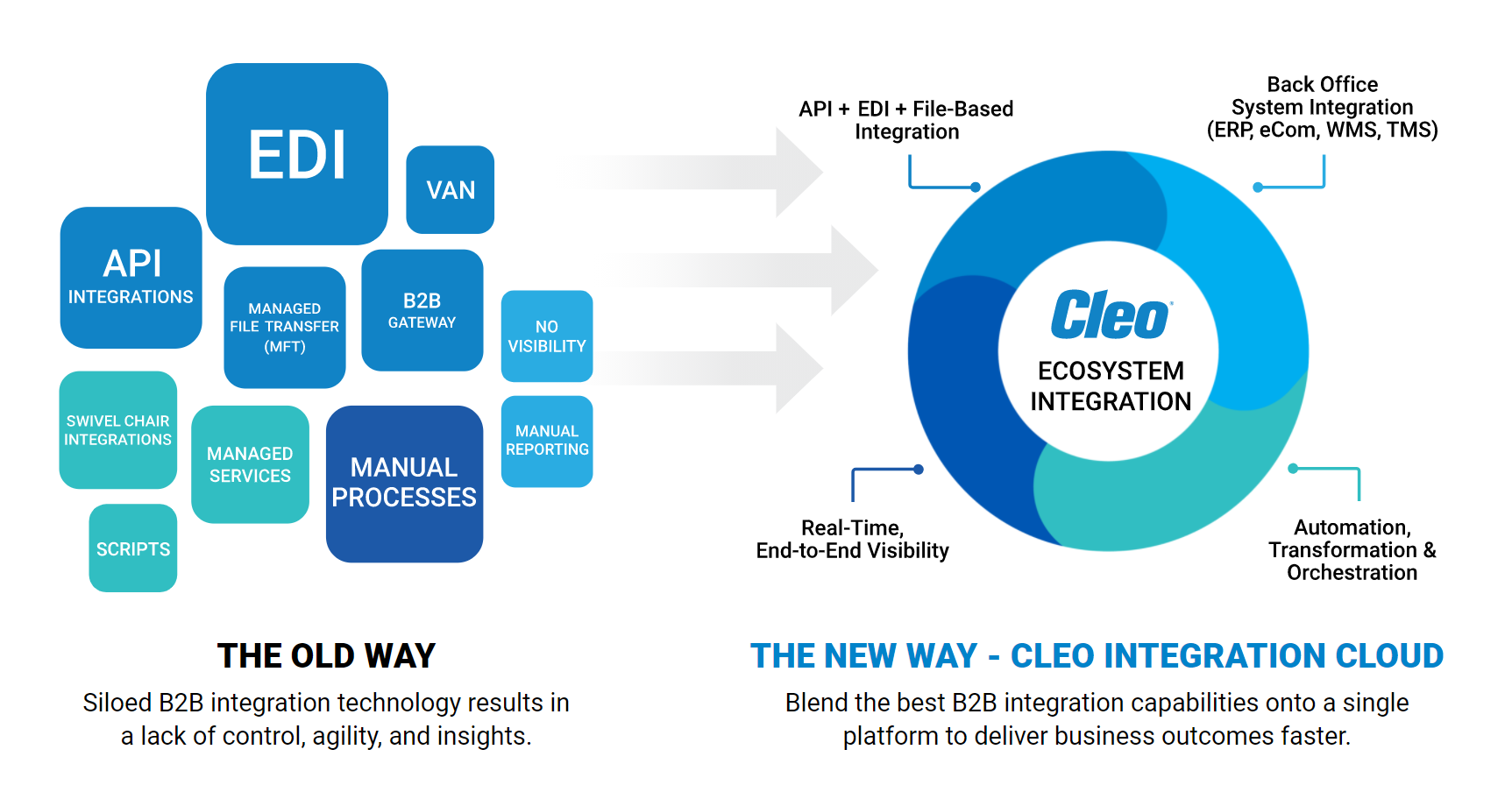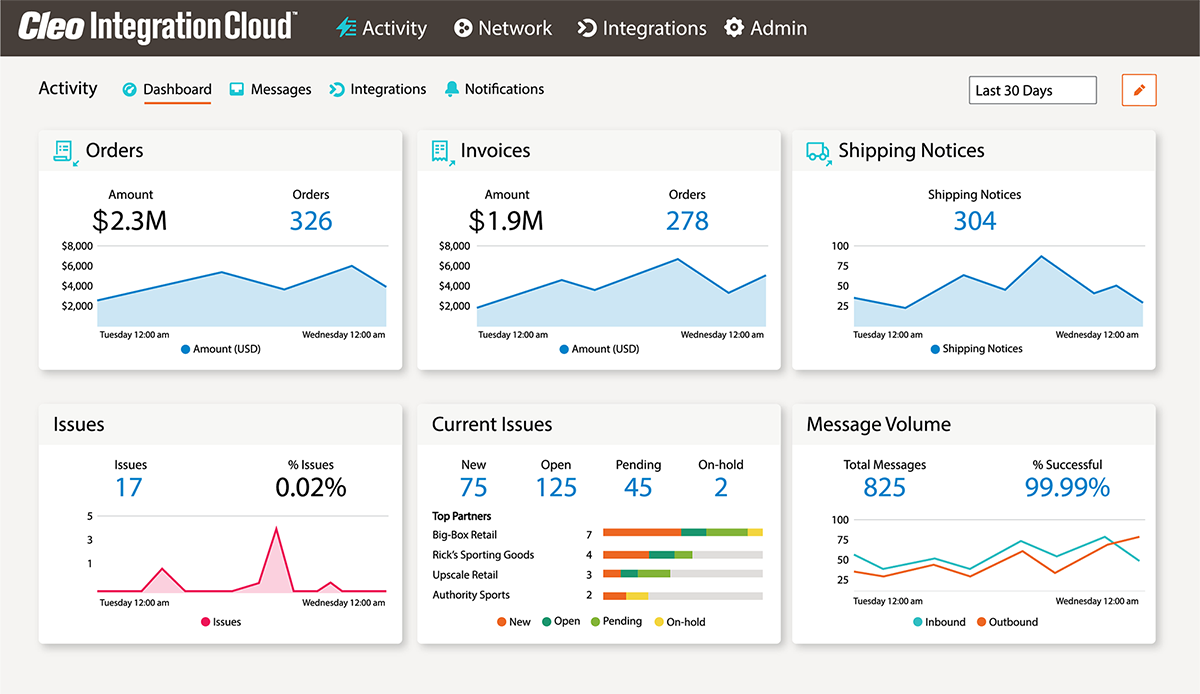CFOs: Integration Software is Your Biggest Financial Growth Lever

The results are in! Seventy-six percent (76%) of CFOs expect net profit growth in 2024 according to a study by Grant Thorton—an increase of 16% from only 9 months prior. This indicates that the world is ready to get back to driving economic growth after businesses around the globe have spent years in savings mode.
So now the question for CFOs is: “What’s my biggest financial growth lever?”
As global supply chain disruptions have plagued businesses for years, companies across industries are re-examining their technology stacks to see how they can combat these unforeseen issues and delays—from manufacturers and 3PLs, to wholesalers and distributors. This is because the businesses that adapt, evolve, and embrace modern integration techniques are best equipped to thrive moving forward as they become more agile, scalable, and data-driven.
So, if you’re a CFO and you find yourself asking, “What is my biggest financial growth lever?” Cleo has the answer: ecosystem integration software.
Ecosystem integration software has the power to not only lift top-line revenue but also drive operational efficiency that will increase profitability.
Here's how:
Increase Revenue
According to our 2024 Ecosystem Integration Global Market Report (Page 15), 77% of companies that invested in supply chain technology in 2023 increased their revenue by $500K that same year, while 57% increased their revenue by $1M. Now in 2024, 96% said they plan to invest at least $100K in supply chain technology, while 51% plan to invest $1M or more.
So, which supply chain technology provides these revenue-driving results? Ecosystem integration. In fact, 98% of respondents said that an ecosystem integration approach would help them achieve their business objectives.
What does that mean for your business?
Organizations often lose revenue because they rely on disparate, legacy technologies that are cobbled together through ‘spaghetti integrations.’ This typically happens over time. For example, you may have made some acquisitions of entities that each has its own integration solution, bought an integration tool that complies with a specific trading partner, needed a quick solution to put out a fire, or created a custom solution. This is a broken B2B integration approach that does not have a solid strategy in place. To fix it, modern organizations need to leverage modern, cloud-oriented technology using an approach like ecosystem integration.

With an ecosystem integration platform, organizations can ensure end-to-end integrations are complete between external ecosystem entities (like customers) to their internal systems of record (like an ERP). With end-to-end integrations, transactions are not lost between systems, and important business processes, like order-to-cash or procure-to-pay, can be properly automated, orchestrated, and maintained to ensure successful outcomes.
Eliminate Lost Orders
Poor integration is causing more lost orders than anyone could have imagined. Lost orders certainly impact revenue, but that is just the tip of the iceberg. As a manufacturer, a lost order means product inventory sitting on the shelf (either at a warehouse or a retail store), which can be costly. Furthermore, if goods are perishable, a lost order can lead to expired products, which directly impact your margins.
According to our 2024 Ecosystem Integration Global Market Report (Page 22), 33% said that integration technology would help their business achieve fewer missed or lost orders.
These lost orders can also cause larger issues with your ecosystem stakeholders, such as customers. Service level agreements (SLAs) are often negatively impacted by lost orders which causes a dip in your vendor scorecards, putting future orders at risk as your customers give their business to other providers instead. Once these relationships are impacted, they can be difficult to repair.

Modern integration software can help eliminate lost orders by providing order tracking, error notifications, and proactive status updates. These features empower customer-facing teams to easily access data to quickly communicate with customers and trading partners in the event of an issue. With in-depth visibility, teams can proactively eliminate lost orders, instead of reacting when it’s too late.
Onboard Trading Partners Faster
The faster you onboard a new trading partner, the faster your revenue starts to flow. In 2023, 44% of companies said it takes between one week and one month to onboard a typical trading partner, while 16% of companies said it takes more than one month. And while we typically think of trading partner onboarding as adding new partners, we must also consider our ability to adapt to mandates and changes coming from existing trading partners.
As your business is considering digitally transforming operations and solutions, so are your customers, suppliers, and partners. Therefore, it is safe to assume onboarding will be an ongoing task for your company.

See How Giltner Logistics Reduced Trading Partner Onboarding by 95%
Giltner slashed its new customer onboarding time from 8+ weeks to just 3 days, including swift activation of their customers' full EDI setup.
A modern ecosystem integration platform can support onboarding in several ways.
1) Any-to-Any Transformation
Having a powerful protocol and transformation engine that supports a wide variety of protocols will allow your organization to say “yes” to virtually any trading partner requirement. This means you will not need additional tools or software, saving you time and money, while avoiding complexity. It also allows your business to meet requirements and set up integrations faster because your technical team will not have to search for a new solution that then has to be implemented.
2) API and EDI on the Same Platform
While EDI might be the lifeblood of your B2B transactions, APIs have been quickly rising in popularity over the past couple of years, especially as cloud computing has taken off. APIs are also needed to support new revenue channels, such as eCommerce and digital marketplaces, integrations into cloud-based systems and visibility platforms, as well as other common supply chain use cases. To remain competitive and tackle these new opportunities, businesses need the best of both APIs and EDI.
This is a challenge because most B2B integration solutions cannot support API-based integrations, and most iPaaS platforms are not well-equipped to support EDI. Fortunately, innovative ecosystem integration solutions conveniently provide API and EDI capabilities on the same platform.
3) Connectors, Pre-built Templates, and Business Profiles
We have all heard the term, “Let’s not reinvent the wheel.” When it comes to onboarding new customers or trading partners, leveraging previous work and expertise in the form of pre-built and customizable integration templates, and business profiles, organizations can not only onboard faster, but they can do it cheaper. Whether you are leveraging a 3rd party for implementing a new trading partner or utilizing an internal team, efficiency matters. An ecosystem integration platform is going to give you maximum efficiency with a plethora of options to shorten and simplify the onboarding process.
Future-Proof Your Business
Utilizing a modern integration platform is crucial for businesses that want to remain or become more competitive in their industry.
Outdated integration and EDI software perform slower overall. They are more susceptible to not to mention requiring more maintenance and resources from your team to fix and operate.
Furthermore, the capabilities of older solutions are often limited in comparison to newer, more innovative options on the market. Outdated solutions provide less visibility, control, security, efficiency, and protocol support, giving your competitors that do use newer integration software a clear advantage.
- On the other hand, modern integration solutions offer superior features such as:
End-to-end automation - Pre-built, customizable integrations
- Vast protocol support
- In-depth, real-time visibility
- Proactive error and SLA notifications
- Flexible service offerings including self and/or managed services
…and more.
--
As a CFO, there are a lot of options to help grow your organization – both top line and bottom line. You can move budget from Research & Development or Operations to Marketing & Sales, take on additional debt to fund growth initiatives, or do a complete overhaul of your technology stack to drive efficiencies. The reality is while all of those options are viable and effective, upgrading your legacy B2B integration tools into a modern, consolidated ecosystem integration platform is a proven method to quickly increase revenue while providing your business with the tools and capabilities to scale, trim costs, and drive profit.
To learn more about how other CFOs have discovered and created value through ecosystem integration contact us at sales@cleo.com or +1.815.282.7695. Or explore some of our educational resources through our content hub.

About Cleo
